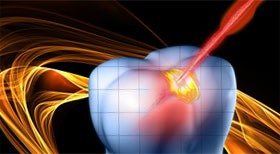There are many existing cancer treatments such as removing tumors by surgery, chemotherapy, and radiation therapy. However, all the treatments mentioned above have high risks in damaging patients’ health in the process of killing or removing the tumors.
There have been ongoing discussions about the intravenous treatment of vitamin C as an alternative cancer treatment by reducing tumours for cancer patients. One of the first researches on the effect of vitamin C on cancer patients was done by Nobel laureate Linus Pauling about 40 years ago. Even though his experiment was later criticized for being faulty and biased, the idea of vitamin C’s benefits for cancer patients was further investigated.

Vitamin C is one of the antioxidants that can prevent cancer. Antioxidants inhibit oxidation in human body. Substances such as oxygen which can oxidize into free radical molecule and damage cells’ DNA or cause cell death. Vitamin C is also known to improve our immune system, and prevent illnesses such as common colds.
However, this same vitamin C, also known as ascorbic acid, is shown to reduce the tumour size in cancer patients. This is when the ascorbic acid is absorbed intravenously(IV) and in high dosage.
One of the many research papers on the effects of ascorbic acids shows decreased growth rate of mesothelioma cells, which is cancerous tumor cells. Since the growth and the spread of tumors with defects in its DNA are the crucial risk of cancer, the results of decrease in growth of tumor cells are significant improvement for cancer treatments. Another research article states that vitamin C is toxic to certain cancer cells, but not to normal cells.
The ascorbic acid is put into our body in the sodium ascorbate form to decrease the pH difference of the vitamin C and human blood. Therefore, if we consume too much ascorbic acid orally, it could cause acidic stomach.
Despite all the benefits of vitamin C, there are some critiques about vitamin C treatments that it only kills certain types of cancer cells, and an excessive amount of vitamin C can affect absorption of Copper and Selenium.
However, even with these minor concerns, trying the intravenous treatments of ascorbic acid for reducing tumor growth could be considered beneficial for cancer patients. Also, further researches and developments on the ascorbic acid treatment for cancer patients could improve the use of treatments for the future.
References
http://www.jamiesonvitamins.com/node/74
http://www.sciencedaily.com/releases/2007/09/070910132848.htm
http://www.quackwatch.org/01QuackeryRelatedTopics/Cancer/c.html
http://www.orthomed.com/civprep.htm




